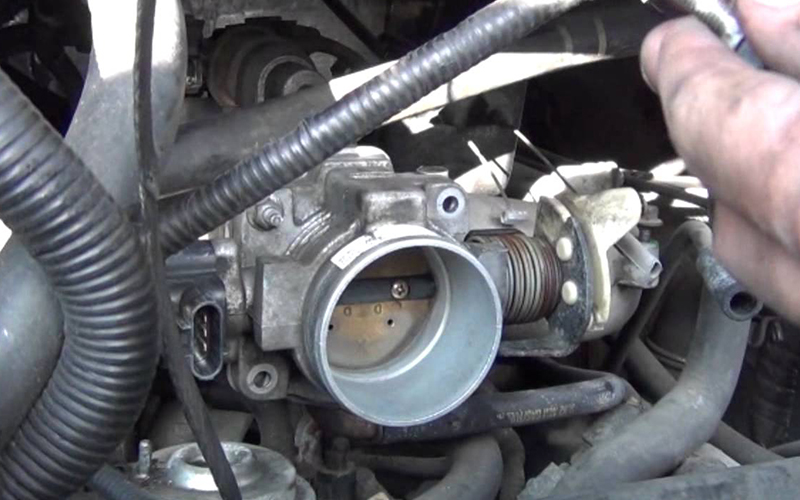

Idle Air Control Valve: 3 Signs You Need to Change It
Car Repair April 3, 2019 0
Unless you are a gear head, one of the most mysterious parts of a car is the check engine light. It feels impossible to figure out what exactly this illuminated message on your dashboard means.
You check the car manual and make endless google searches just to discover the only thing you know is that there is a light illuminated on your dashboard.
It feels like unless you’re a certified mechanic, with a full garage of tools, you’ll never know what the problem is, nor how to fix it.
While we can’t give you all the answers, and make it clear, our aim today is to give information on one of the reasons your check engine light has come on: the air control valve is malfunctioning.
What are Idle Air Control Valves?
The idle control valves, sometimes referred to as the idle air control valve, is a component of engine management in most motor vehicles. The purpose of this component is to help regulate and control the engine’s idle speed.
As the vehicle is moving, the control valve will both increase and decrease as necessary to help keep up with how the engine is operating.
The idle control valve itself is mounted on the vehicle’s intake manifold where it is controlled by the engine control module. This module acts to adjust the idle speed and bring it into the ideal parameters in accordance with the electrical system and engine temperature.
Issues of a Malfunctioning Idle Air Control Valve
In the case of the idle control valve failing, there are multiple issues that can occur with the vehicle. Depending on the issue, this may cause the car to even become undrivable.
By paying careful attention to the symptoms of this, it can help prevent bigger issues and the inconvenience of not having a car to drive.
If you suspect that your idle control valve is malfunctioning, there are some symptoms to look for including:
1. Irregular Idle Speed
The first symptom is that your car is beginning to have an irregular idle speed. In fact, this is one of the most common symptoms that is associated with having a problematic idle air control valve.
The idle air control valve is programmed for regulating and maintaining engine idle speed to be constant. If this valve fails or has issues this can cause the idle speed to become irregular.
While checking the engine, watch the tachometer on the dashboard. If your vehicle’s engine is idling significantly above one thousand RPMs then it’s most likely too high.
However, also bear in mind that there is also a problem if the RPMs are too low or surging with repeated climbs and falls.
2. Check Engine Light Comes On and Stays On
A second symptom of a faulty idle air control valve is that the check engine light comes on and stays lit.
If there is an issue with the engine that the engine control module detects, then this light will turn on.
It should also be noted that there are a wide variety of other serious issues that could trigger this alert.
Never ignore the check engine light. The intention of this light is to grab your attention and make sure you take your car into a garage to get it looked at.
3. Engine Stalling
A third, and last, symptom is engine stalling. In the case where the idle control valve fails, it can leave the vehicle without a constant source of air to help maintain the proper idle. This can cause the engine to stall while in the middle of operating.
This can also cause the engine to stall when it’s turned on.
How to Check an Idle Air Control Valve
There are a few common signs to look for if you think you control valves are idle or acting irregular. As mentioned above, be on the lookout for symptoms like irregular idle speed, the check engine light going on, and engine stalling.
If your car has any of these symptoms, and you are convinced it’s the idle air control valve, then there are steps you can take to confirm this is the problem. There are several methods you can choose to try and make this determination.
Method 1
If you are not an expert in automobiles and mechanics, you should take your car into a mechanic immediately if you have noticed any of the above symptoms.
Do some basic online research for reviews of mechanics and garages in your area first, or if you have friends that have had recent car work done, then call them and ask if they could recommend anyone.
Once you find a place you think can work, call them and let them know what the symptoms and problems you are having. They will then schedule an appointment for you to come in and have your car looked at. Get a favorite book or magazine and take your car in to be fixed. It could take a little while for them to properly diagnosis your car’s issues.
Method 2
The second method involves using a code scanner to check for your vehicle’s error codes. If you have a friend who is a mechanic or has the ultimate home garage, then you can ask them to borrow their scanner, assuming you don’t have one of your own.
Take the scanner and connect it to the port that is below the dashboard. Once it is connected, turn it on and use the scanner to bring up any possible error codes that are available.
Once you have a list of codes, you need to look up what they mean. You can do this by looking through your car manual. If you’re not a mechanic, though, these codes probably won’t mean much to you.
Once you look up the codes, you can then determine the exact nature of your problem. If it is the idle control valve, you have two choices. You can choose to go the easy route and take it to a mechanic – possibly your mechanically inclined friend who loaned you the code scanner – or you can fix it yourself.
Method 3
The last method is more intensive and should only be attempted if you have a general understanding of tools and how engines work. If this something you are determined to do yourself, you can also look up tutorial videos on YouTube to help guide you through the process, step-by-step.
The first step in this is to check to make sure your engine idle is irregular. If you can do some research to see what the manufacturer says the engine idle should be, then this will save time. If not, you will need to determine this for yourself.
To do this, you need to turn on the engine and watch the tachometer on the dashboard. Let the car idle for a few minutes and watch the tachometer.
Once the number has settled, write it down on a piece of paper and put it somewhere safe because you will need this number for comparison purposes later on.
After you have written down the number you will need to remove the idle control valve. Removing this will help you see if it is the valve that is causing the issue.
- 1To remove the valve, you first need to turn off your vehicle’s engine.
- 2Next, open the hood of the car and disconnect the device.
- 3Now you should start your car again and look at the tachometer. Write down the number of RPMs.
Once you have these two numbers you can compare them to one another and determine if removing the valve made a difference or not.
How to Replace the Idle Air Control Valve
If you decide that you want to be the one to fix your car, then there are a few basic steps to take when you want to replace your car’s idle control valve. This is by no means an exhaustive how-to and is intended only as a general guideline.
1. Make sure your car is turned off.
2. Disconnect the battery.
3. Locate the valve according to the make and model of your car.
4. Disconnect the wiring harness from around the valve.
5. Remove the old idle control valve.
6. Clean the seat that the old idle control valve was resting on.
7. Install the new valve.
8. Reinstall the wiring harness.
9. Reconnect the battery.
10. Test the car’s idle speed.
When Your Idle Air Control Valve Goes Wonky
A faulty idle control valve is a serious issue that can lead to a multitude of vehicular problems. If your vehicle is showing any of the symptoms related to the problem, or you otherwise suspect it may be having the issue, it’s important that the issue is dealt with immediately.
Regardless of whether you take your vehicle to a professional technician or decide to fix it yourself, it’s important to deal with the matter immediately.





No comments so far.
Be first to leave comment below.